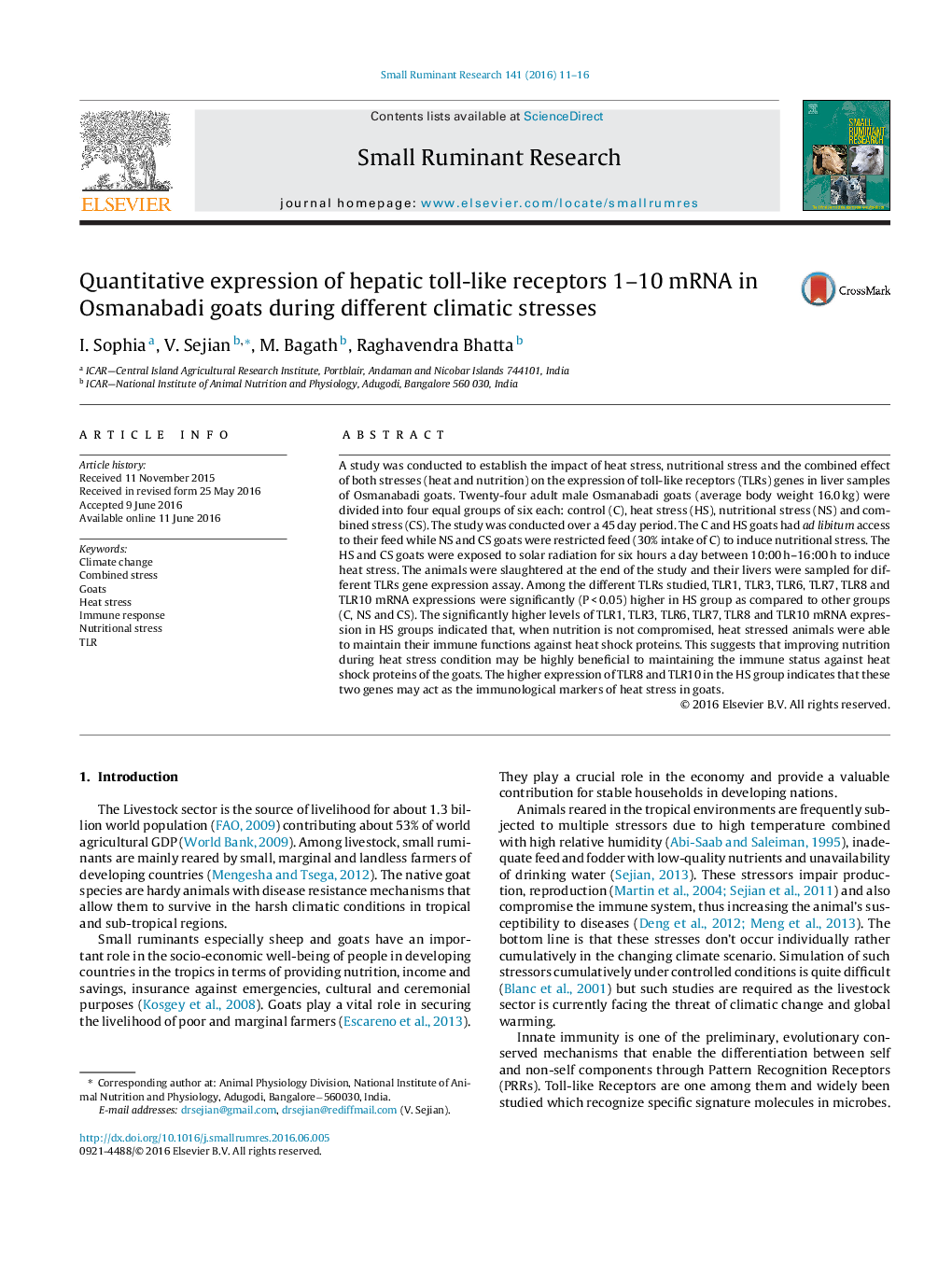| کد مقاله | کد نشریه | سال انتشار | مقاله انگلیسی | نسخه تمام متن |
|---|---|---|---|---|
| 5795377 | 1554351 | 2016 | 6 صفحه PDF | دانلود رایگان |

- This is the first report on impact of different climatic stresses on TLR gene expression in large animals.
- The higher expression of TLR gene in HS group indicates the significance of optimum nutrition to sustain immune functions.
- Both TLR8 and TLR10 in HS group indicate that these two genes could be immunological markers for heat stress in goats.
- Nutritional status of an animal was more important in controlling TLR gene expression in goat rather than heat stress.
A study was conducted to establish the impact of heat stress, nutritional stress and the combined effect of both stresses (heat and nutrition) on the expression of toll-like receptors (TLRs) genes in liver samples of Osmanabadi goats. Twenty-four adult male Osmanabadi goats (average body weight 16.0Â kg) were divided into four equal groups of six each: control (C), heat stress (HS), nutritional stress (NS) and combined stress (CS). The study was conducted over a 45 day period. The C and HS goats had ad libitum access to their feed while NS and CS goats were restricted feed (30% intake of C) to induce nutritional stress. The HS and CS goats were exposed to solar radiation for six hours a day between 10:00Â h-16:00Â h to induce heat stress. The animals were slaughtered at the end of the study and their livers were sampled for different TLRs gene expression assay. Among the different TLRs studied, TLR1, TLR3, TLR6, TLR7, TLR8 and TLR10 mRNA expressions were significantly (PÂ <Â 0.05) higher in HS group as compared to other groups (C, NS and CS). The significantly higher levels of TLR1, TLR3, TLR6, TLR7, TLR8 and TLR10 mRNA expression in HS groups indicated that, when nutrition is not compromised, heat stressed animals were able to maintain their immune functions against heat shock proteins. This suggests that improving nutrition during heat stress condition may be highly beneficial to maintaining the immune status against heat shock proteins of the goats. The higher expression of TLR8 and TLR10 in the HS group indicates that these two genes may act as the immunological markers of heat stress in goats.
Journal: Small Ruminant Research - Volume 141, August 2016, Pages 11-16